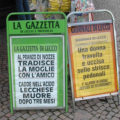I attended Woodstock School, an international boarding school in Mussoorie, Uttaranchal, India, from 1977 to 1981 (when I graduated from high school). It meant a great deal to me, and, like many other alumni, I am very actively involved with the school.
The Woodstock School pages on my site are for present, former, and future students, staff, parents, and friends of Woodstock School – and anyone else who would like to learn about this unique and wonderful institution.
More to Read on This Site
- Why Send My Child to Woodstock School?
- More Reasons to Send Your Child to Woodstock School
- Growing Up in Boarding School
- Getting Ready for Woodstock School – Some Practicalities
- A School Year Abroad
- Hogwarts Memories
- The Soul of a School
- Woodstock School History Resources
- Woodstock School Links
The SAGE Program
…offers semester, full year and gap programs at Woodstock and other international schoools.
The School Today
Wildylog – Pete and Dot Wildman are staff members at Woodstock School, natives of Liverpool. Pete’s been keeping a web site of pictures and journal entries about their Woodstock experience. His writing is warm, funny, and reflects very well the open-mindedness and sense of adventure that brought them to India. You’ll enjoy this site whether or not you have any ties to or interest in Woodstock.
My daughter Rossella attended Woodstock as a senior, graduation in 2008. Her India adventures can be seen here.





